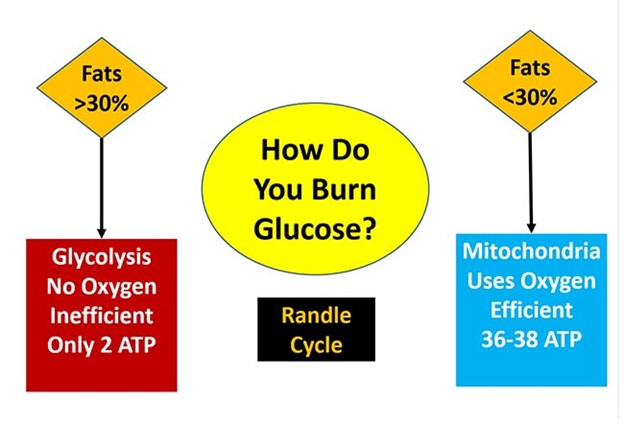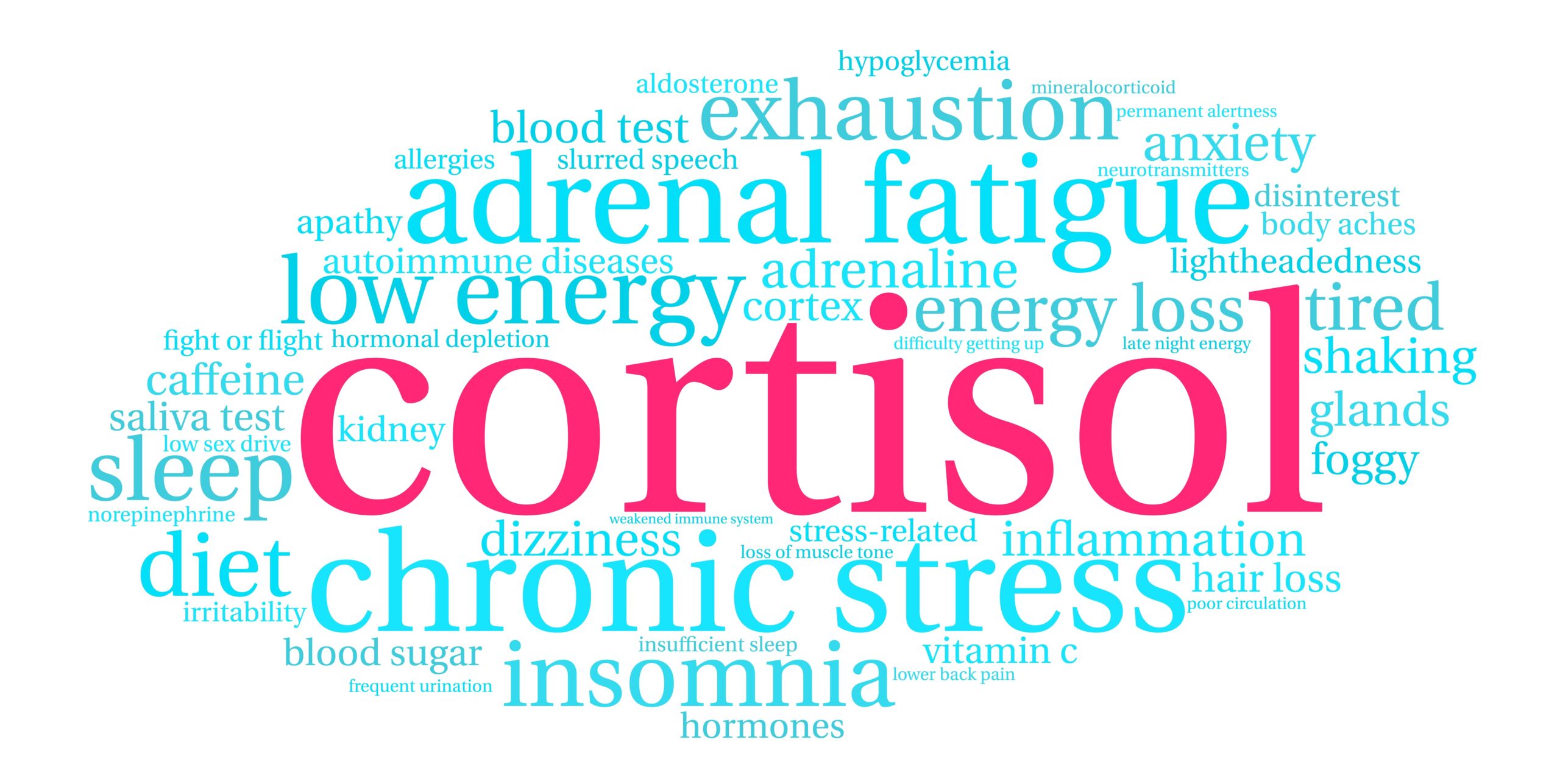How Does Cortisol Work?
Most of us think of cortisol as the stress hormone, but that is not its primary purpose in your body, which is to make sure your glucose level never drops too low, as that could result in a hypoglycemic coma which could kill you prematurely.
Both low-carb and fasting are great interventions in the short-term for those who are overweight and metabolically inflexible, but when used chronically they can damage your metabolism and lead to health complications because they tend to cause chronic elevations in cortisol resulting in inflammation and catabolic lean muscle loss.
So, if you don’t have enough glucose in your bloodstream, your body makes glucose by secreting cortisol, which breaks down your lean muscles, bones and brain to make amino acids that then convert to glucose in your liver. The primary benefit of anabolic steroids is that they’re anti-cortisol. That’s how anabolic steroids work to build muscle mass.
Cortisol also uses up stored fat in a process called lipolysis. While this may sound like a great thing, the problem is that it doesn’t get rid of the harmful visceral fat found around your internal organs that causes inflammation. It burns your good fat, the peripheral and subcutaneous fat, which is useful.
So, ultimately, chronic excess cortisol is going to cause inflammation and impair your immune function. It also increases food cravings. So, you do not want your cortisol to be elevated continuously in an effort to rescue you from hypoglycemia. Hence, a chronic low-carb diet is not a good idea for most people.
Cortisol is also one of t he primary drivers of aging. It accelerates the aging process, which is something very few in the longevity community are even aware of. If it is chronically elevated, you simply will die prematurely as it is highly catabolic, meaning it will break down your body tissues. To stay healthy as you age you need to be anabolic and build healthy tissues like muscle and mitochondria.
he primary drivers of aging. It accelerates the aging process, which is something very few in the longevity community are even aware of. If it is chronically elevated, you simply will die prematurely as it is highly catabolic, meaning it will break down your body tissues. To stay healthy as you age you need to be anabolic and build healthy tissues like muscle and mitochondria.
Elevated cortisol will seriously impair those efforts.
High Cortisol Is Bad for Your Brain and Mental Health, Cortisol Management is important
Importantly, cortisol not only shreds lean muscle, but also brain tissue, so elevated cortisol promotes brain atrophy, which is a hallmark of both dementia and depression. studies showing that administering anti-cortisol medication to people with treatment-resistant depression put them into remission within as little as 48 hours.
“So I think it’s a very good argument that cortisol is catabolic to the brain, and clearly, if it’s catabolic to the brain, it’s probably not going to improve your mood, if anything is going to worsen it,” he says. (1)
However, just because carbs appear to be a better fuel because they generate less reactive oxygen species in your mitochondria, one can’t indiscriminately increase carbs in your diet without paying strict attention to the  amount of fat you are consuming, and just as importantly, the quantify and the type of carbs you are consuming. Failure to do may result in a decrease in your health and vitality.
amount of fat you are consuming, and just as importantly, the quantify and the type of carbs you are consuming. Failure to do may result in a decrease in your health and vitality.
Low-carb diets have helpe
d at least tens of millions of people improve their health for a very good reason, and that is there is a stealth switch that controls what fuel your mitochondria can burn, as they can only burn one fuel at a time: either fat or glucose.
The switch has been given the name the Randle Cycle, but it is more helpful to visualize it as a railroad switch that changes the tracks of the train, and the train can only travel down one track, not both. This is because only one type of fuel can be burned at a time.
The best-case scenario is you metabolize, or burn, glucose in your mitochondria without any reductive stress. (Reductive stress happens when there’s too much of the cell’s “antioxidants” or molecules that prevent damage, creating an imbalance. Instead of protecting the cell, this overly reduced state disrupts normal processes and can harm proteins, leading to issues like heart problems, nerve diseases, or even cancer.) When you do this, you will only generate 0.1% reactive oxygen species (ROS). Reactive oxygen species (ROS) are unstable molecules that contain oxygen and can react easily with other molecules in the body. They are naturally produced during normal cell activities but can damage cells if their levels get too high, contributing to aging and diseases.
Not only does this route generate less ROS, but it also is incredibly efficient at energy production by creating 36 to 38 ATPs for every molecule of glucose that is metabolized. It will also generate metabolic water and carbon dioxide, which are also important for your health.
For this to occur, as indicated in the figure above, you will need to consume less than 30% of your calories as fat. When you consume significantly more than that amount, the switch changes to burn fat in your mitochondria and you will not be able to burn glucose until your fat decreases to less than 30% of calories. (1)
Since glucose is unable to be shuttled into the mitochondria to burn, it winds up backing up into your bloodstream, raising your blood sugar. This is a major contributor to diabetes. What little glucose is burned for fuel is done by using glycolysis, which is a primitive pathway that bacteria and cancer cells use.
It is great we have this pathway as you absolutely need it for quick fuel when you are activating your type II muscle fibers. But if this is the primary way you burn glucose, you are in a catastrophic metabolic state as you are creating loads of lactic acid as a waste product instead of healthy CO2, and you are only generating 2 ATPs for every molecule of glucose, which is 95% less energy.
Lactic acid increases reductive stress, which causes reverse electron flow in the mitochondria and causes reductive stress, which increases the ROS to 3 to 4%, which is 30 to 40 times more than when glucose is burned efficiently in the mitochondria.

Balance is the key
Several nutritional factors can influence cortisol levels, the hormone released in response to stress. These include:
-
Carbohydrates
- High-glycemic foods (e.g., sugary snacks) can temporarily spike cortisol levels.
- Balanced meals with complex carbs may help regulate cortisol.
-
Protein
- Adequate protein intake supports adrenal function and can moderate cortisol responses.
-
Fats
- Omega-3 fatty acids (found in fish, pasture raised meats) may help reduce cortisol levels during stress.
- Trans fats and excessive saturated fats may worsen stress responses.
-
Caffeine
- High caffeine intake can elevate cortisol, especially in stressful situations.
-
Sugar
- Excess sugar consumption can increase cortisol over time, particularly with frequent spikes and crashes in blood sugar.
-
Micronutrients
- Vitamin C: High levels (found in citrus fruits, bell peppers) may reduce cortisol.
- Magnesium: Helps lower cortisol during stress (found in leafy greens, nuts, seeds).
- B Vitamins: Support adrenal health and cortisol regulation (found in whole grains, eggs, and legumes).
- Zinc: Linked to stress regulation and found in shellfish, nuts, and seeds.
-
Dehydration
- Increases cortisol, so staying hydrated is key.
-
Alcohol
- Can disrupt cortisol regulation, often increasing its levels.
-
Timing of Meals
- Skipping meals or prolonged fasting can raise cortisol, while regular, balanced meals may help stabilize it.
A balanced diet rich in whole foods and low in processed items is generally best for maintaining healthy cortisol levels.
- Mercola – important information about low-carb glucose and cortisol
For more information – Contact us or book an appointment.

